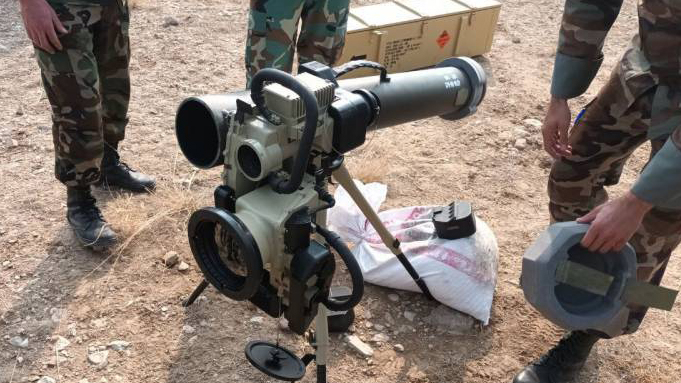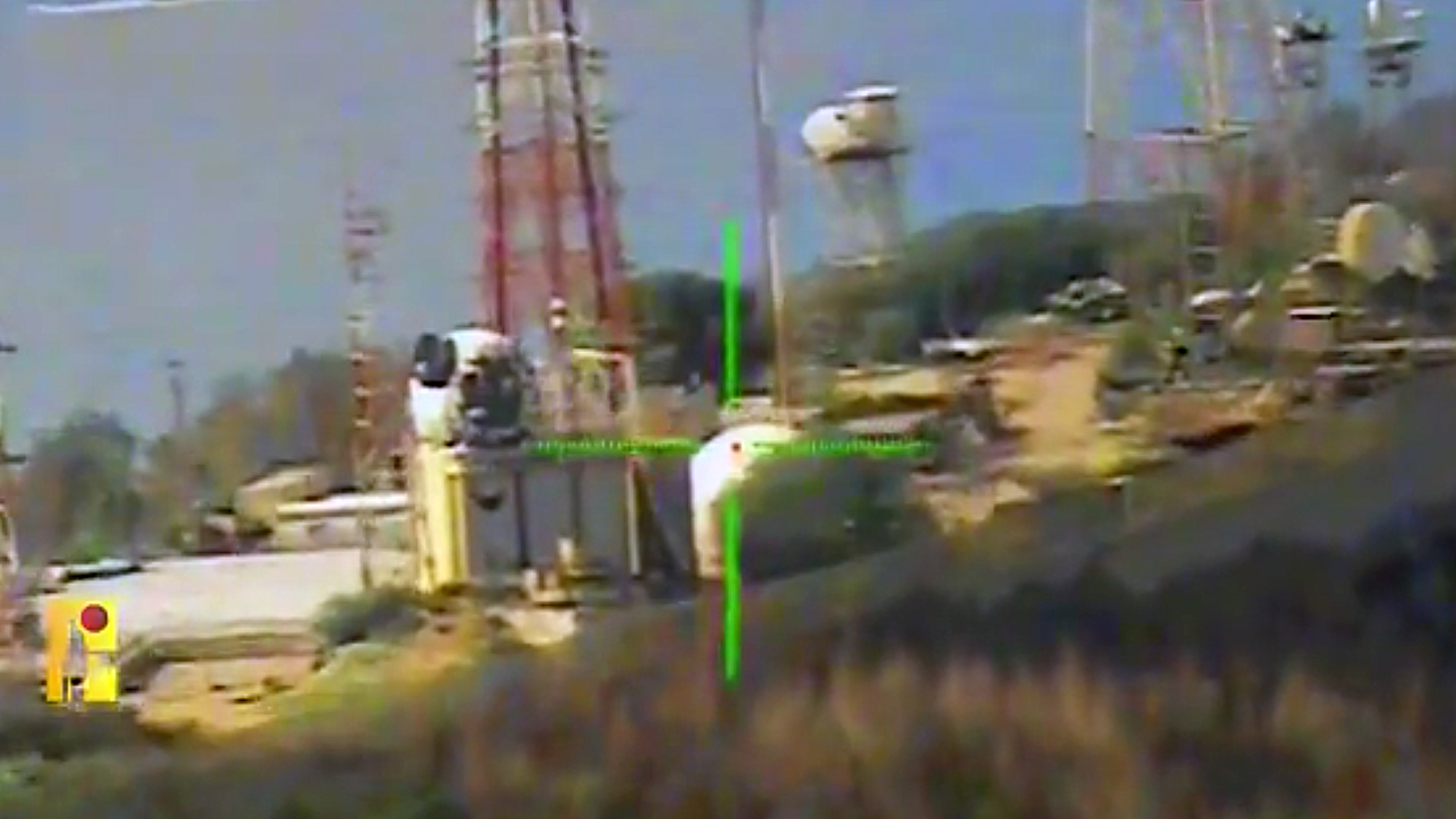A new video features a familiar-looking missile flight profile and seeker perspective from a very unfamiliar source. The clip shows a missile being launched and quickly climbing before flying toward a cliff-side Israeli surveillance outpost along the border with Lebanon. The weapon then dives towards its target — a dome structure — before the screen goes dark. While this looks very much like the videos we have seen from Israeli Spike-series anti-tank missiles over the years, instead this footage comes from the country’s nemesis to the north, Hezbollah.
The Spike series, which traces its origins back decades, was innovative when it first emerged in that the missiles allowed for man-in-the-loop first-person control in flight. This means they could also be launched and fly towards a target area before being locked onto a target (lock-on after launch). In other words, the target wouldn’t even need to be line-of-sight of the launcher. This allowed for many new tactical possibilities, including hitting targets behind cover and even finding a target’s exact location after launch. The missile could even be diverted to another target midway through its flight. In most versions, once fired, a long line of fiber-optic cable spooled out behind the missile providing connectivity to the person controlling it. Others, such as the extended range Spike-NLOS, use wireless datalink.



Today, many Spike variants exist, including long-range vehicle-mounted variants and shorter ranged man-portable variants that look similar to other modern ATGM launchers, like the U.S. FGM-148 Javelin. The missile family has gained significant popularity in recent years and the U.S. Army is now a customer for the Spike NLOS version for use on its AH-64E Apache helicopters.
Regardless, Iran has made its own missile system named Almas that uses an identical concept of operations and was clearly ‘inspired’ by Spike. In fact, it is understood to have been developed by reverse engineering Spike missiles that fell into Hezbollah hands during its war with Israel in 2006 and were subsequently funneled back to Iran for exploitation. Almas was unveiled in 2021 and it now has man-portable, air-launched, and ground/surface vehicle-launched versions in production.

It is one of these Iranian Almas missiles that appears to be in use in the video in question, offering the ability to make indirect attacks from a considerable distance away from its launch point. In some ways, the Spike series has been made less unique with the rise of first-person view and other man-in-the-loop kamikaze drones, although one can also see it as something of a progenitor to these systems.
The fact that Hezbollah is in possession of these weapons shouldn’t come as a big surprise as Iran has transferred vast quantities of ever more advanced missiles and rockets to the Lebanon-based militant group. As the video clearly shows, weapons like Almas present a unique defensive challenge for Israeli Defense Forces as they can pop-up and attack targets that traditional ATGMs cannot, including sensor-strewed surveillance posts on the top of small mountains, as depicted in the video.

If anything else, the video serves as another reminder of how increasingly advanced weaponry is being from Iran to its proxies across the Middle East. Capabilities once only available to leading-edge militaries are now in the hands of militant groups. This has been a central news story as of late with the first use of anti-ship ballistic missiles by Houthi forces in Yemen and Iranian-backed Iraqi militias are now deploying short-range ballistic missiles. These are just a couple examples, there are many others.
With Israel’s war with Hamas continuing on, and skirmishes with Hamas continuing along the Israeli-Lebanese border, this won’t likely be the last video we see of these missiles in action, especially now that they are officially confirmed as being in Hezbollah’s hands.
Contact the author: Tyler@thedrive.com
